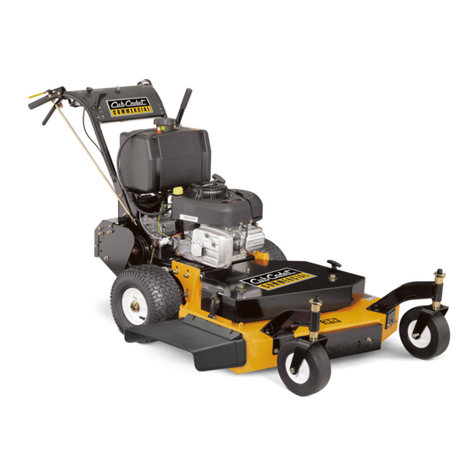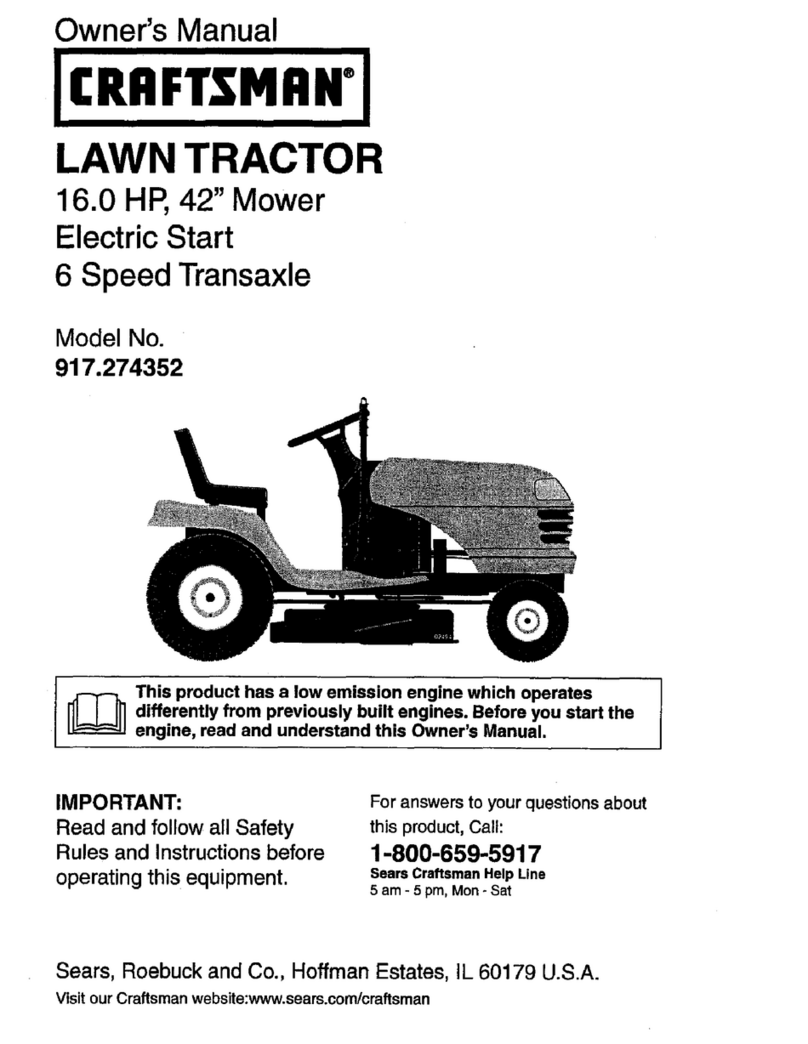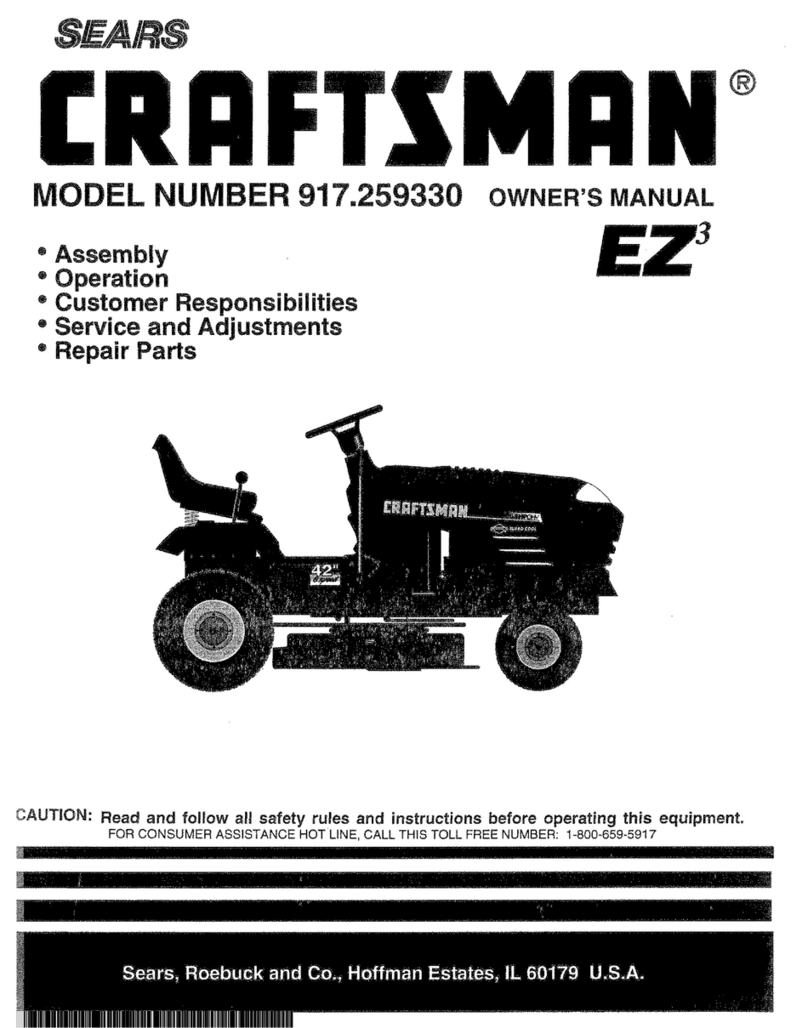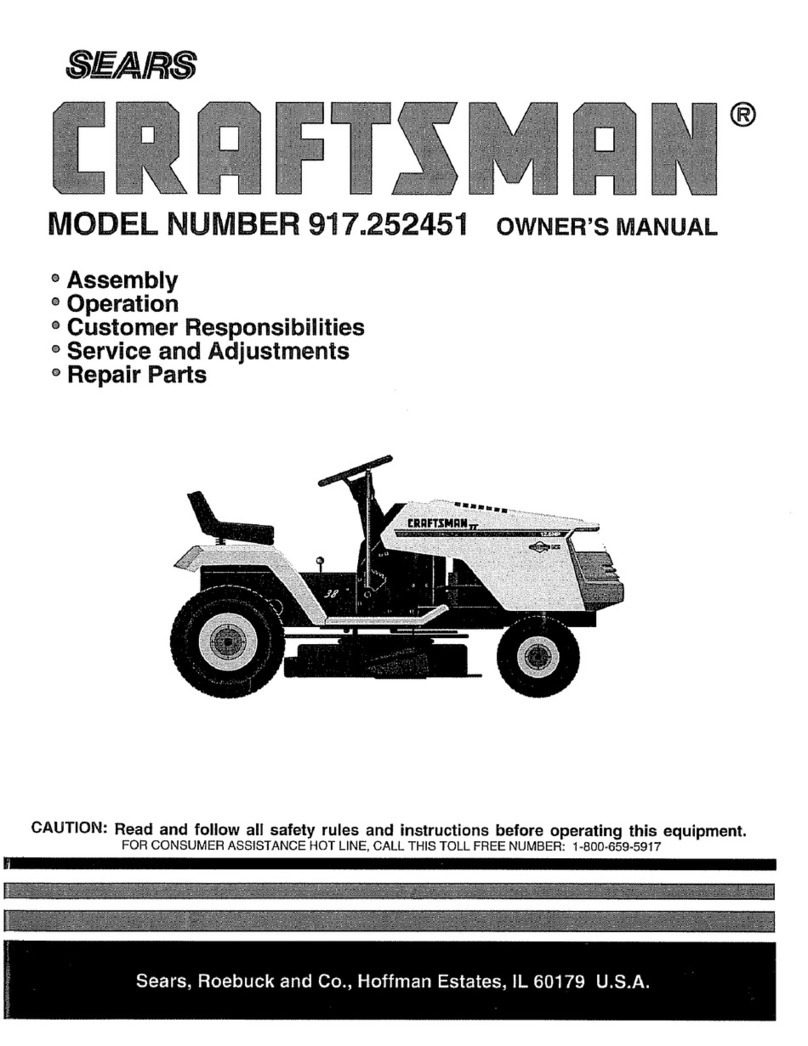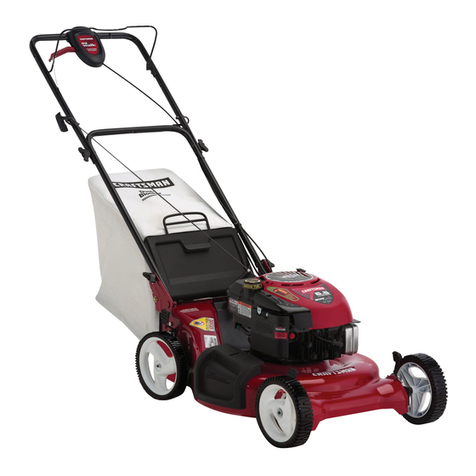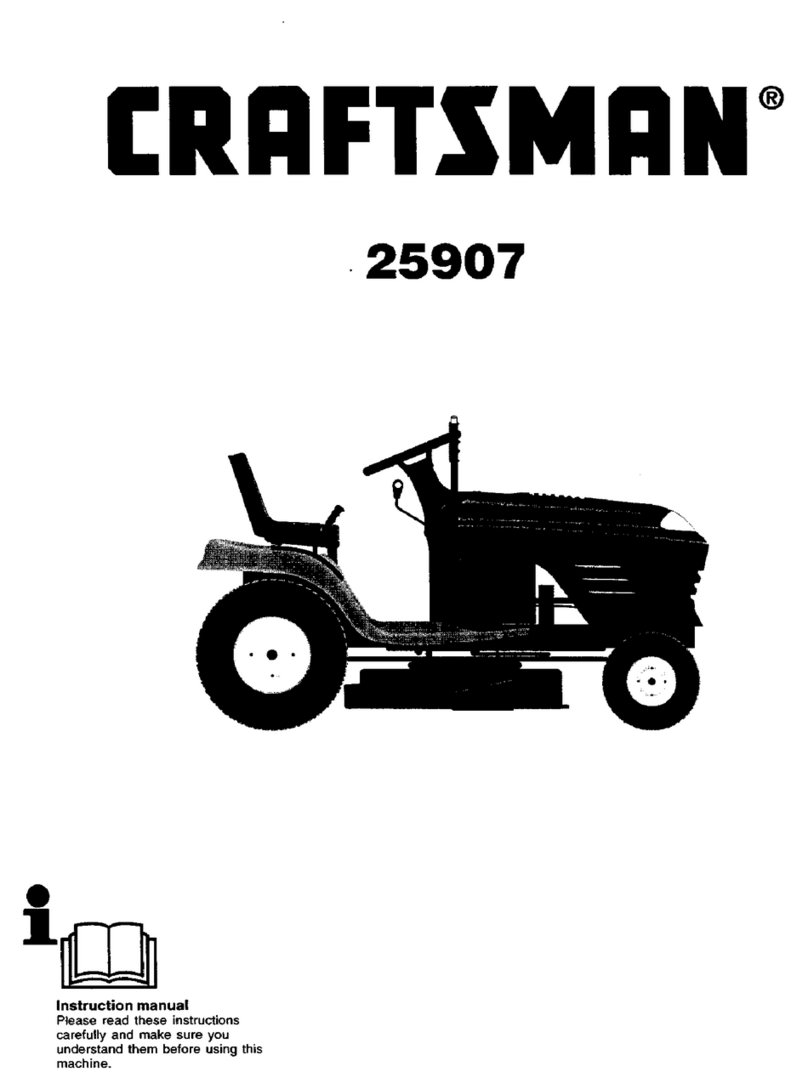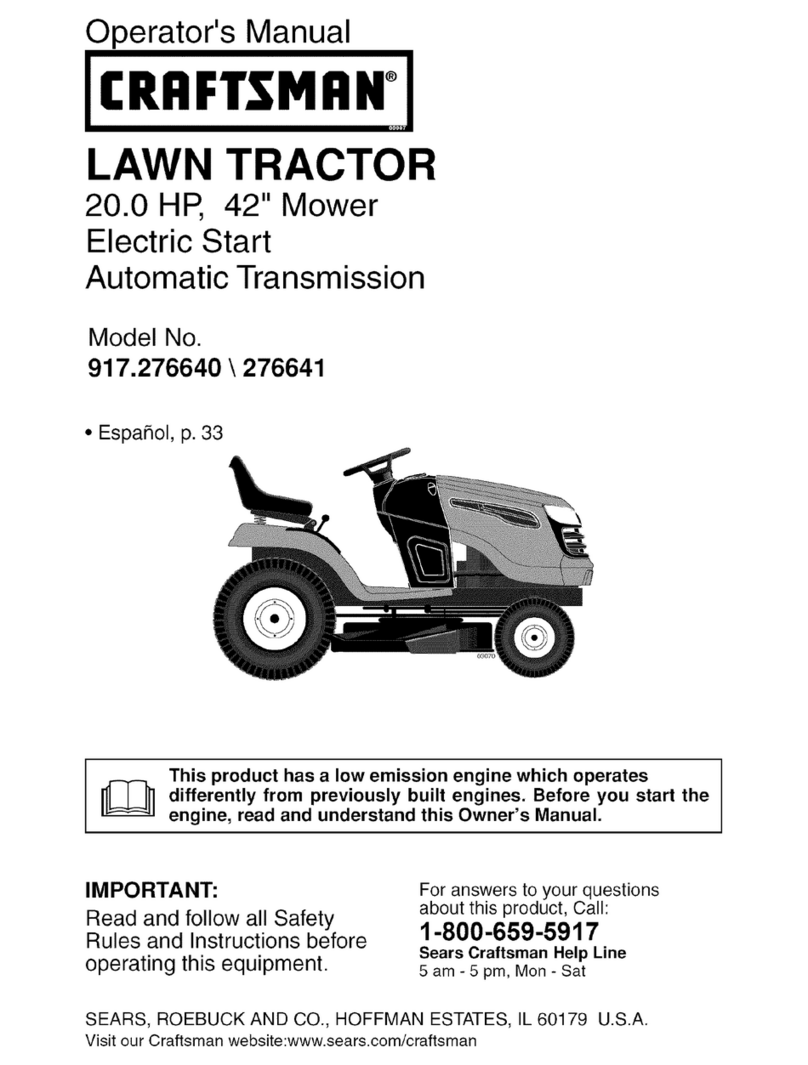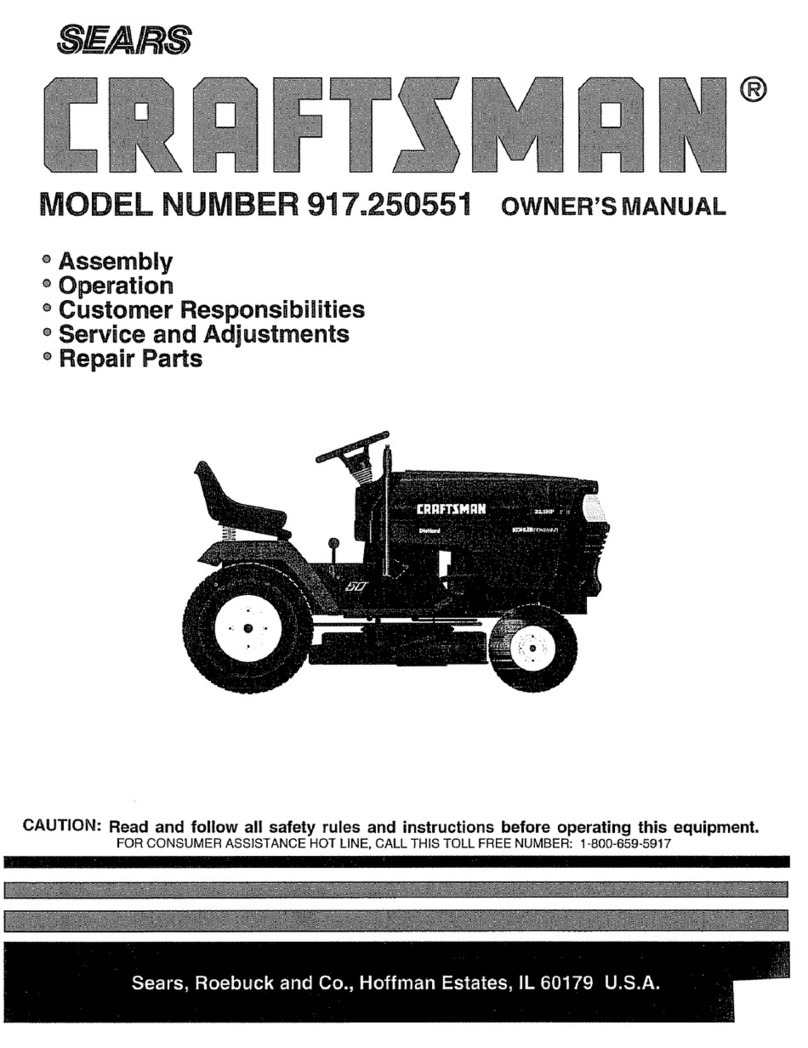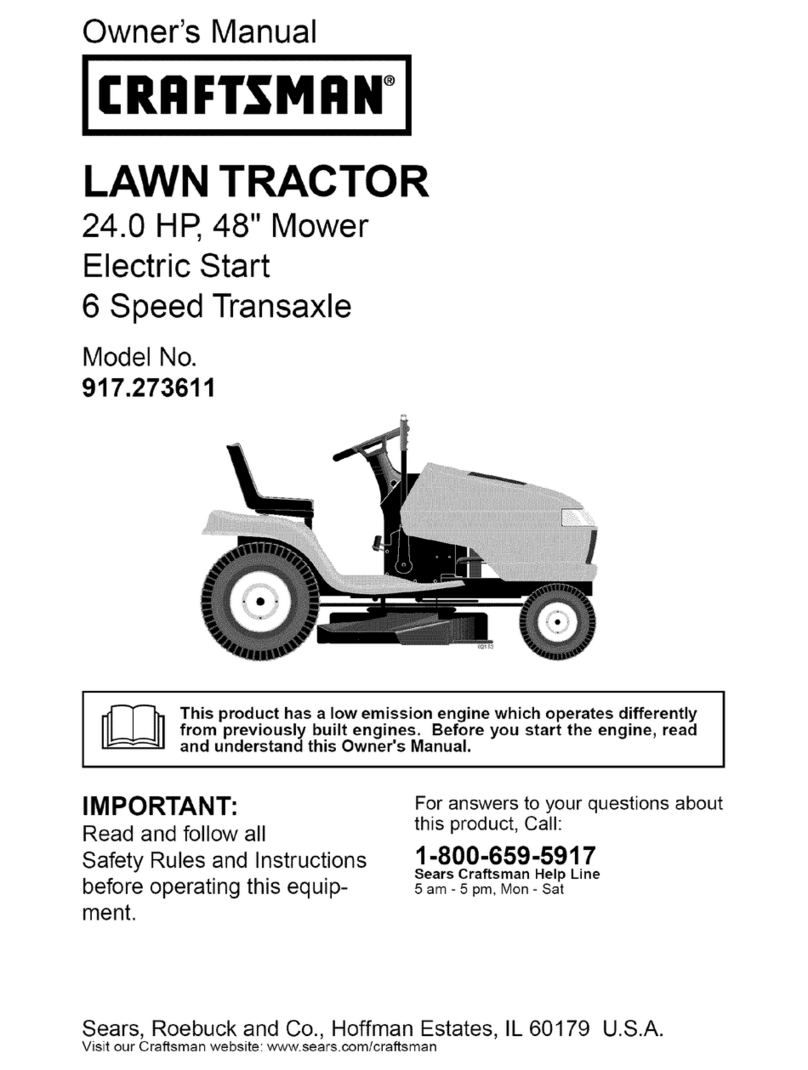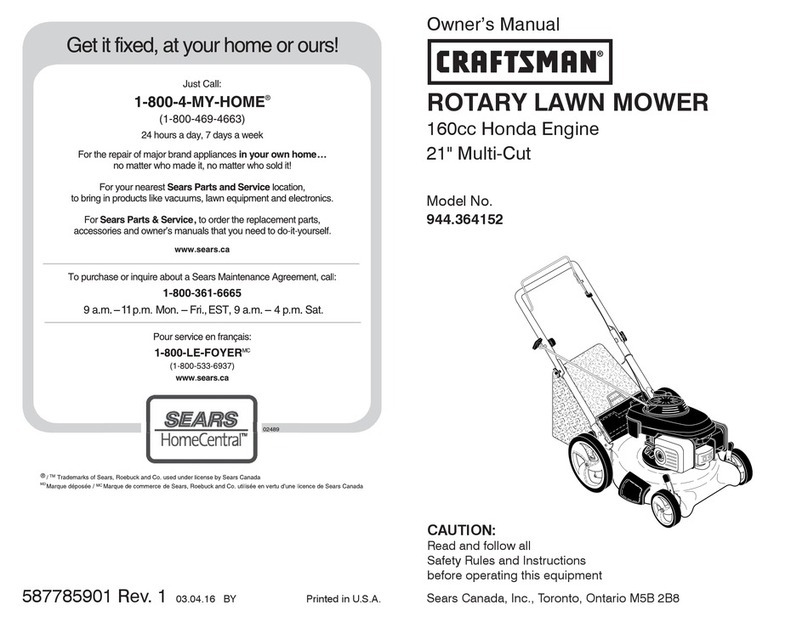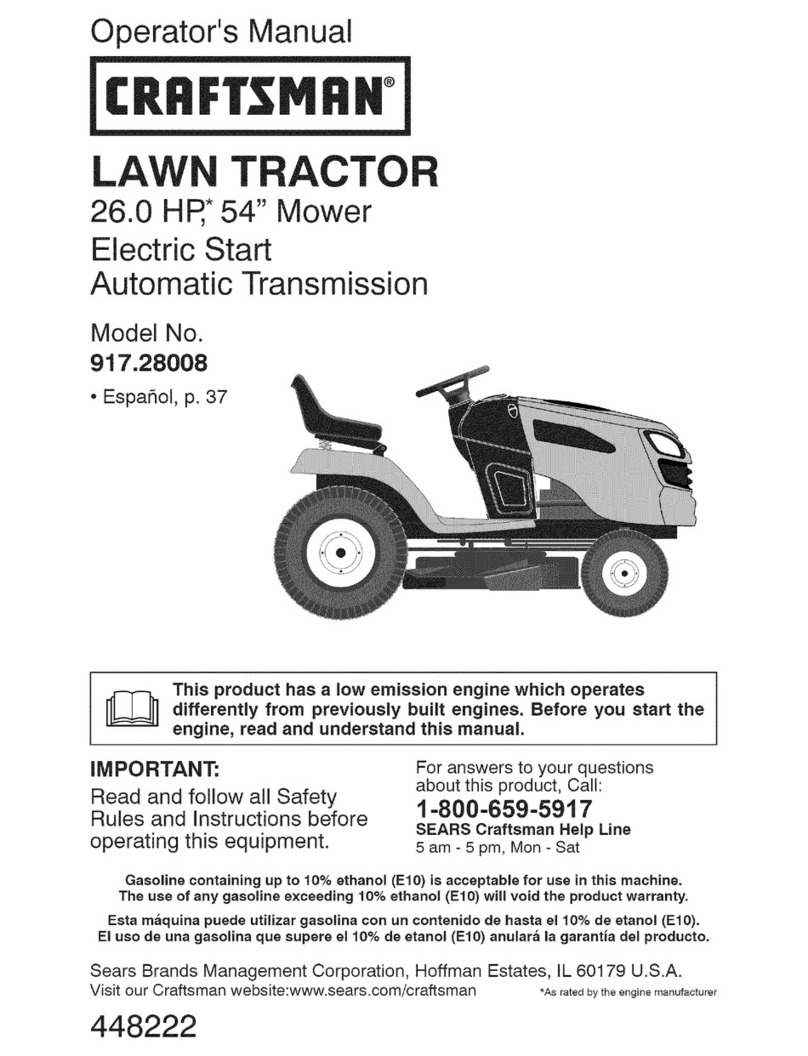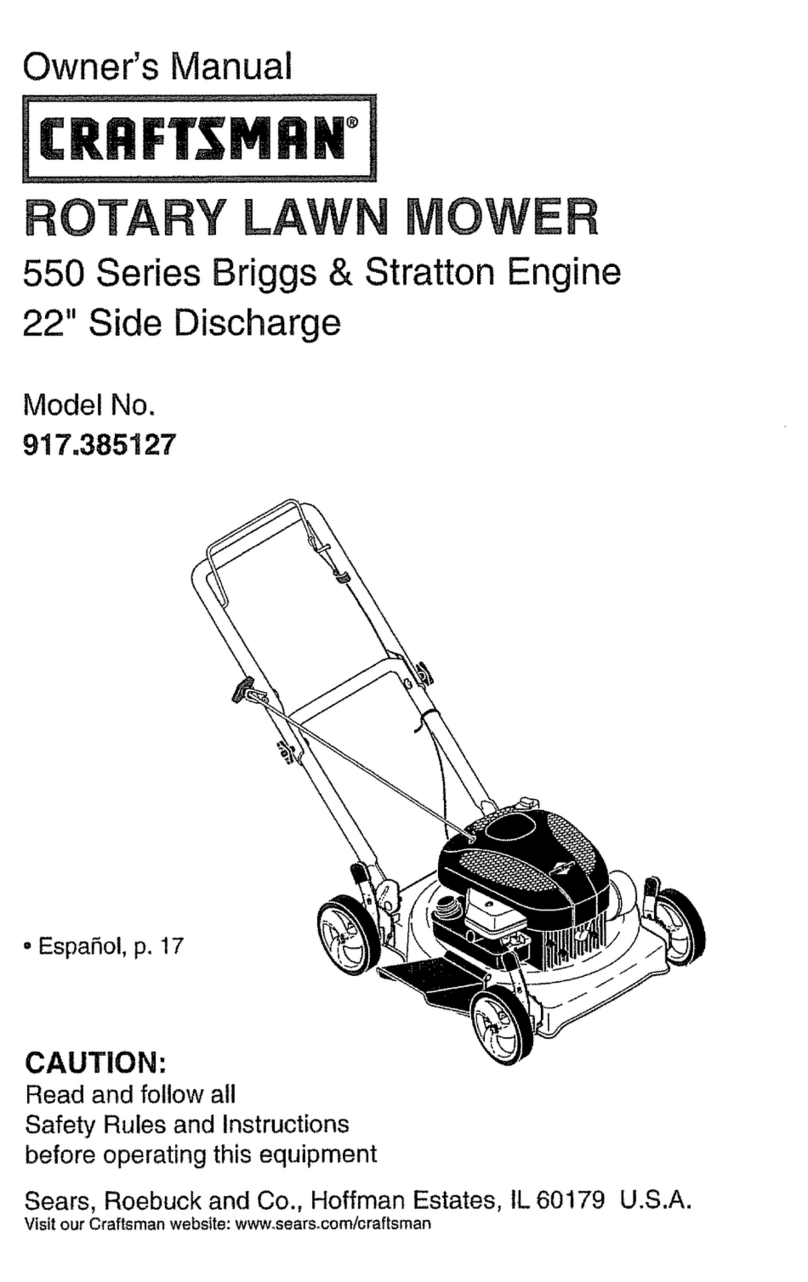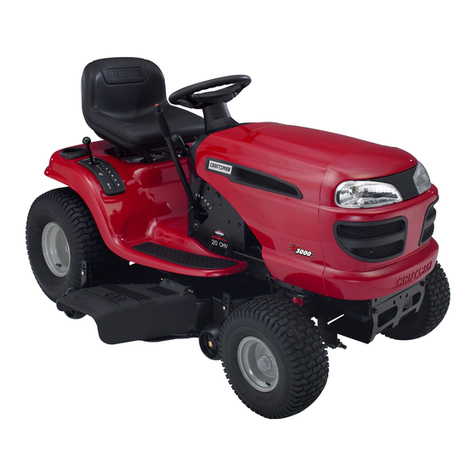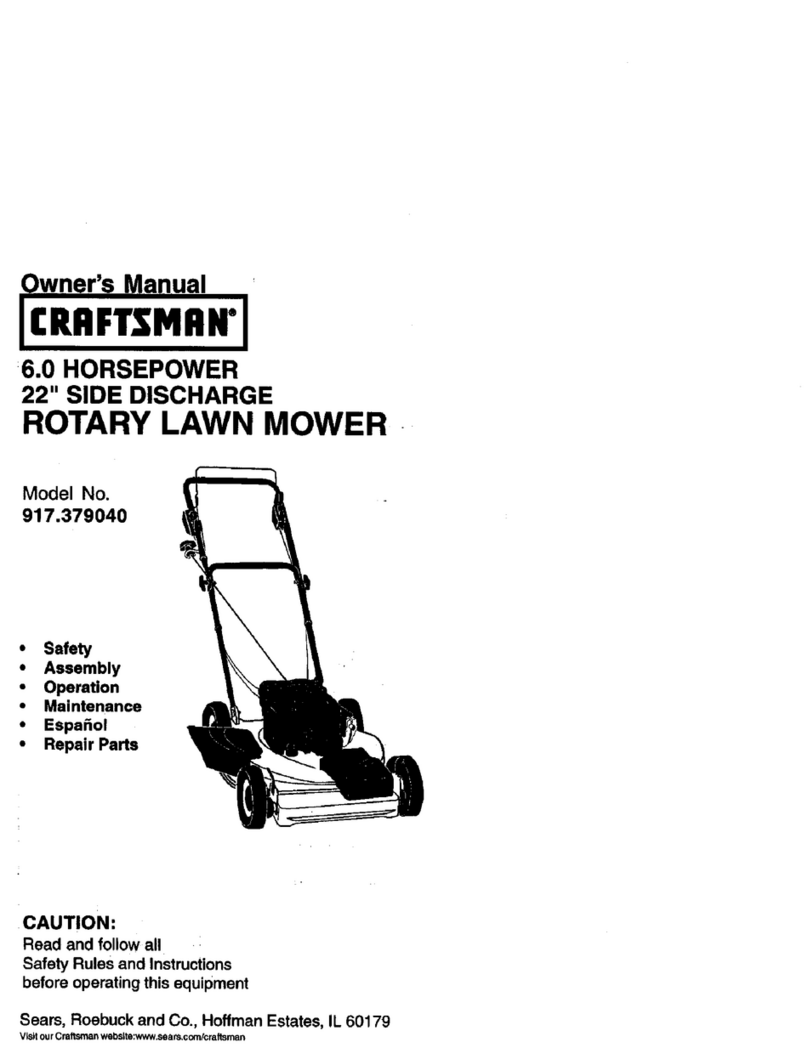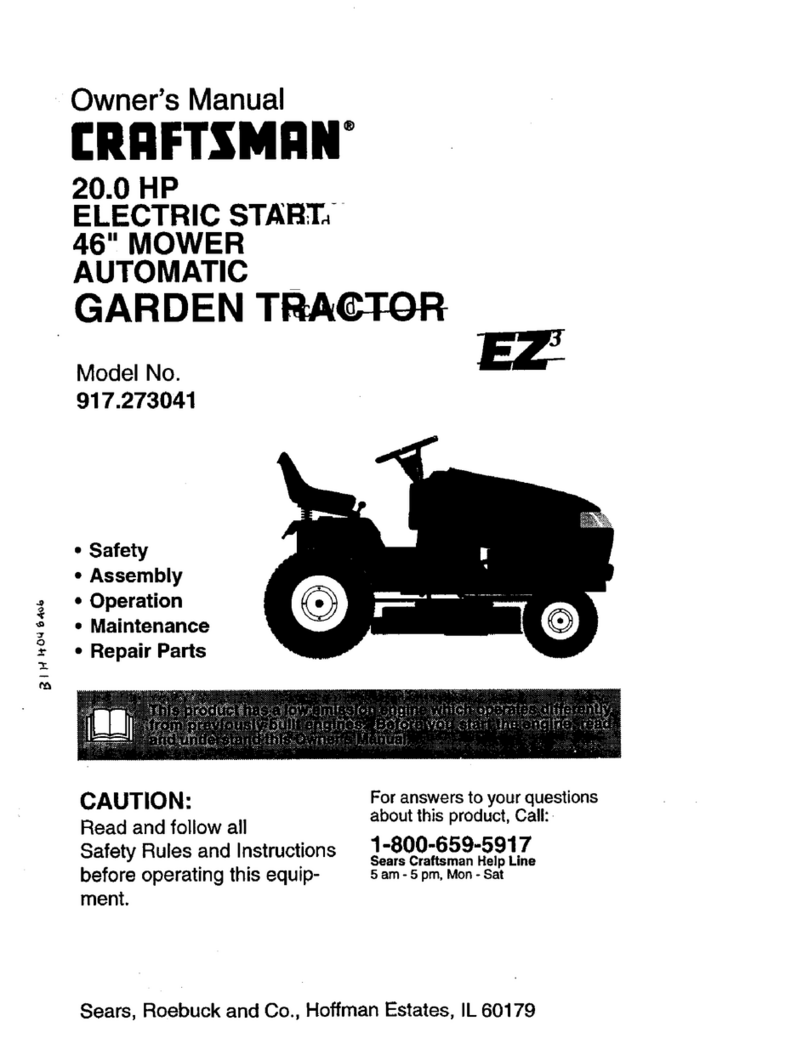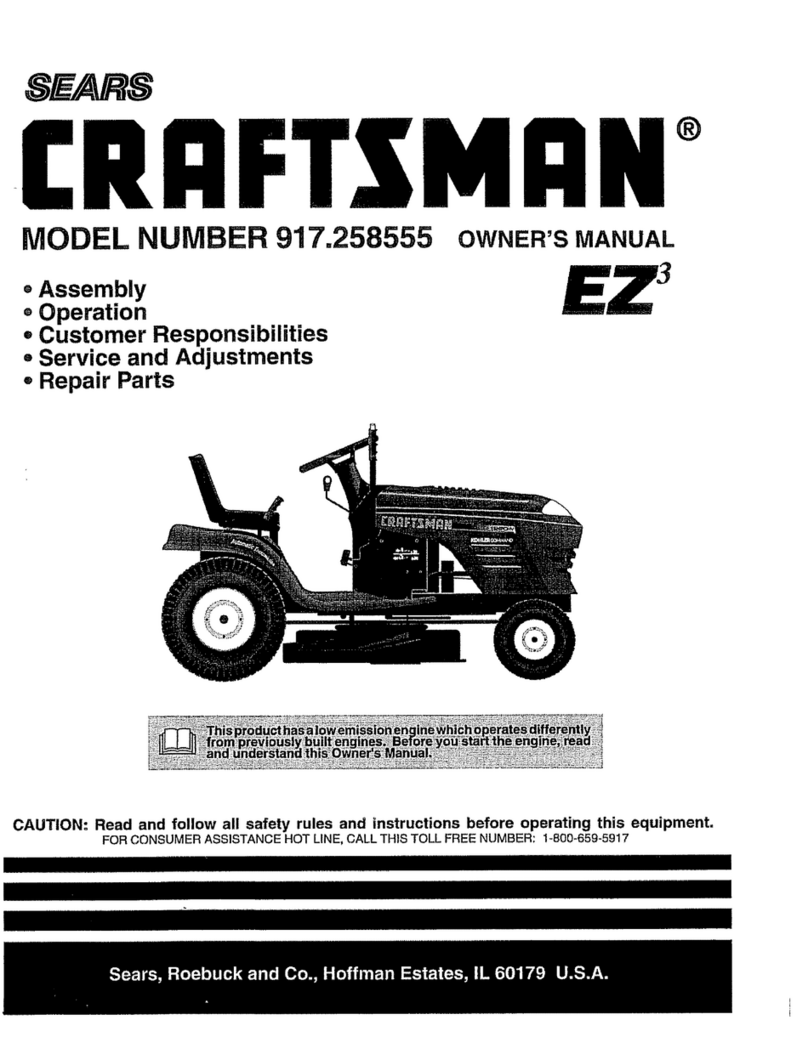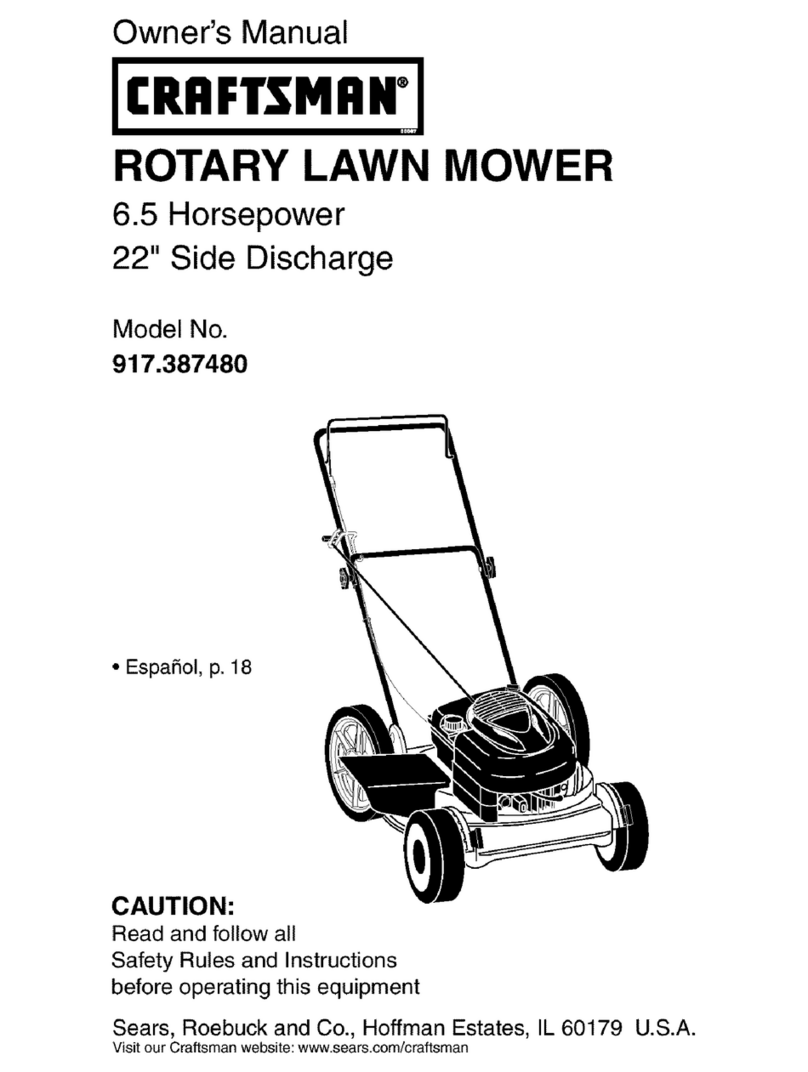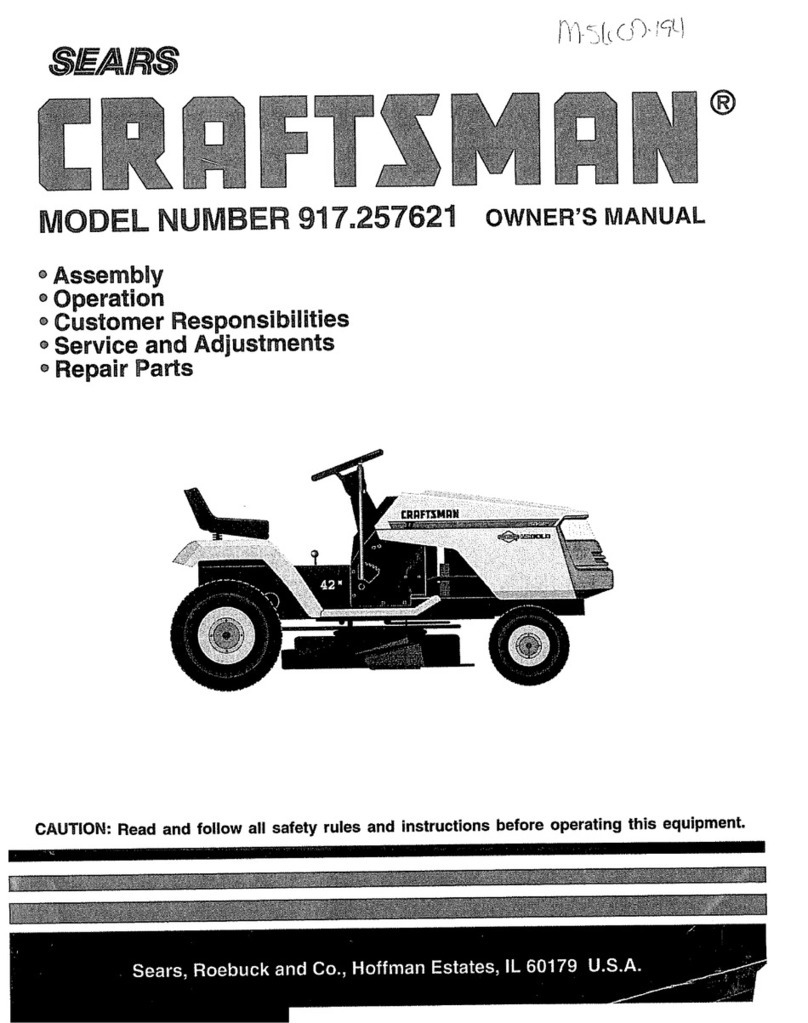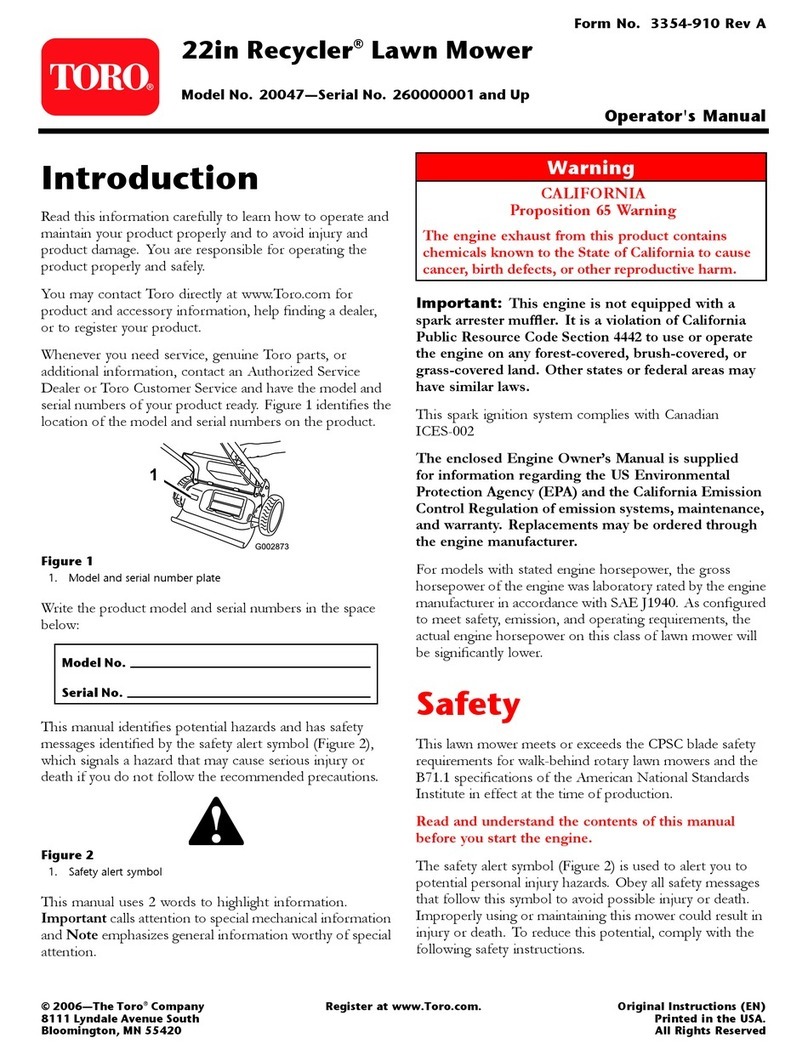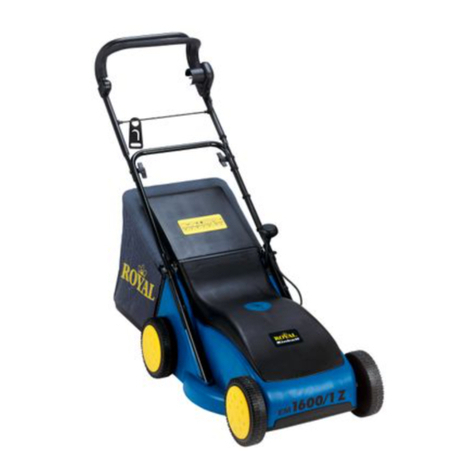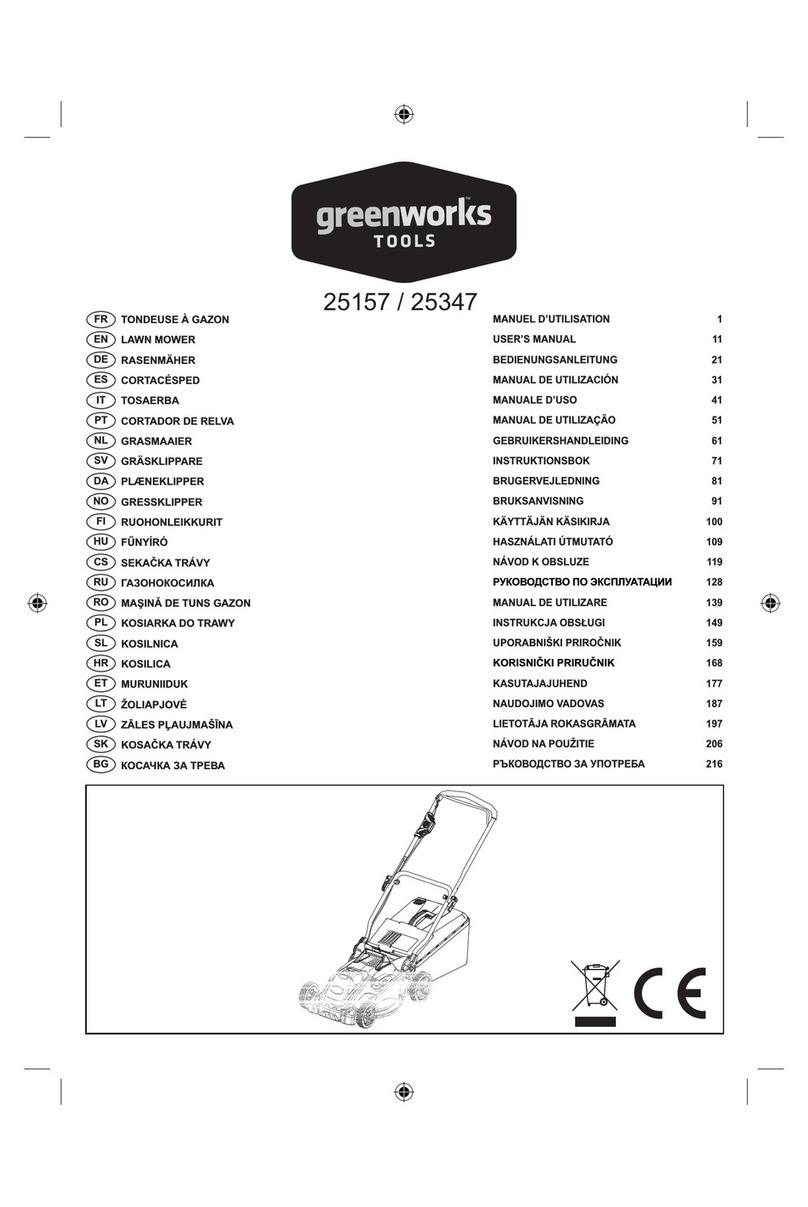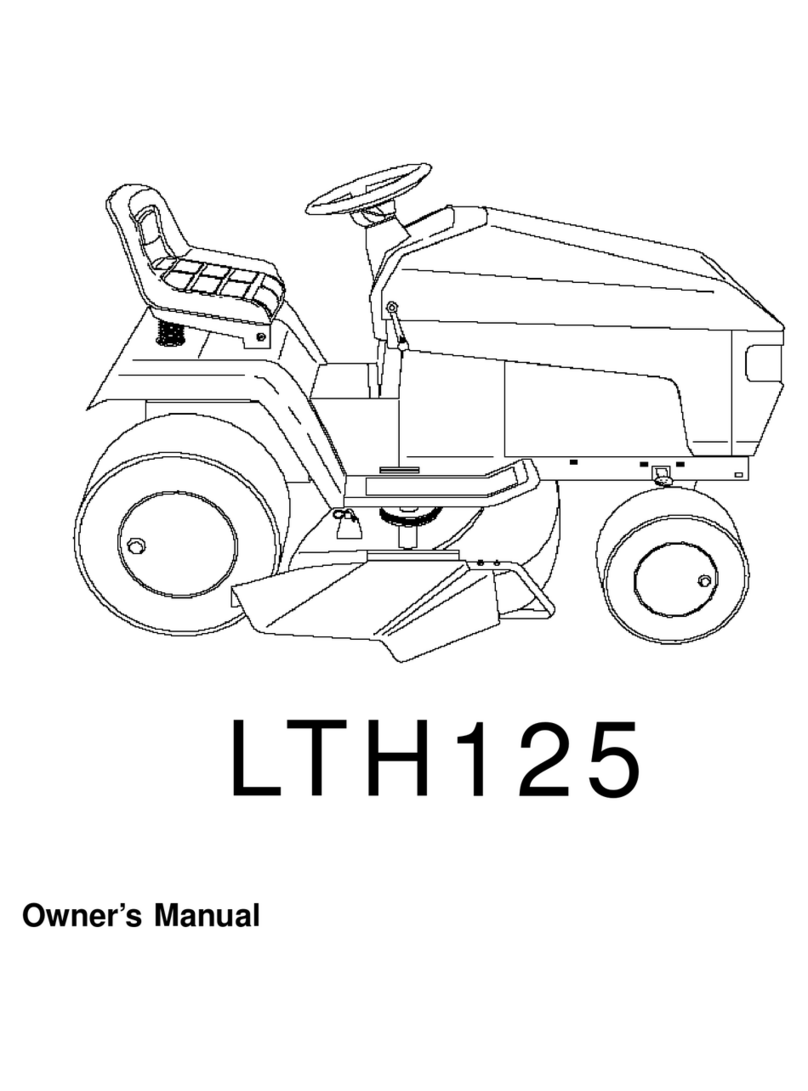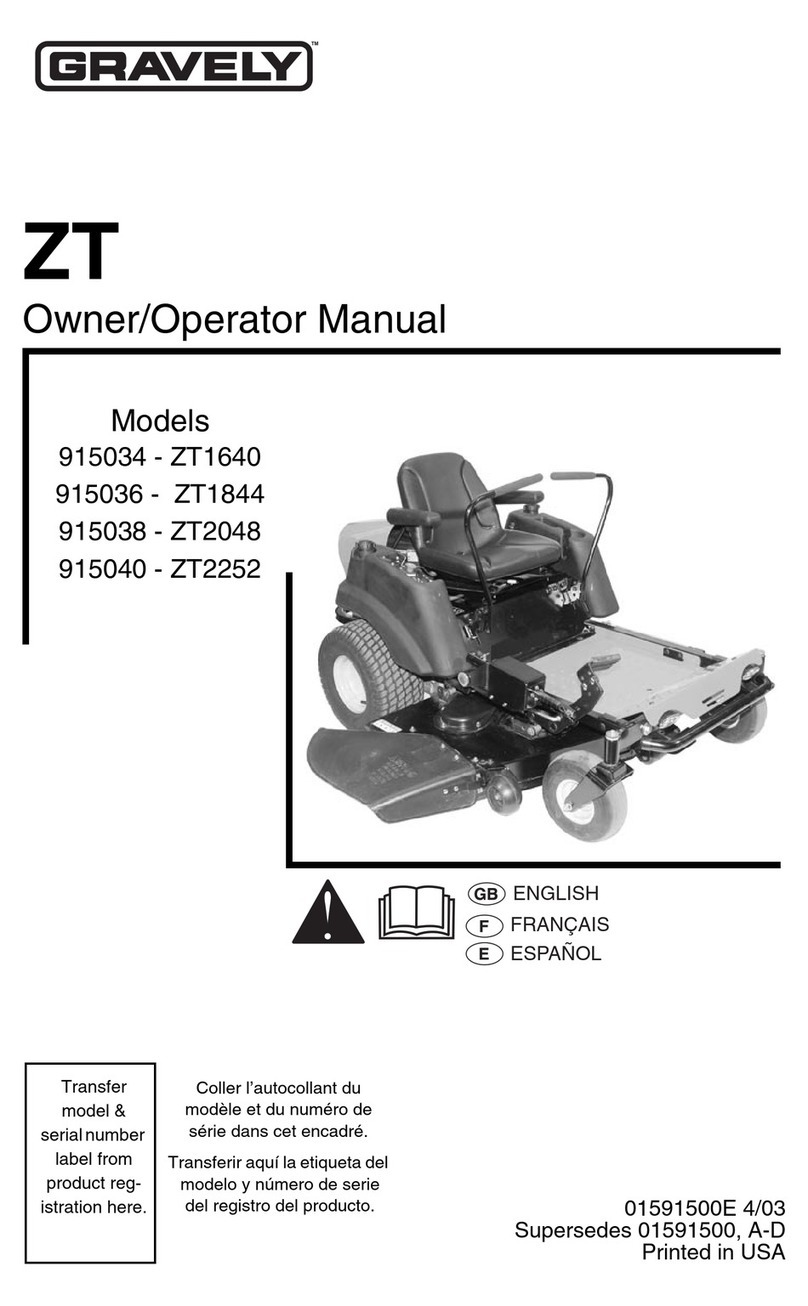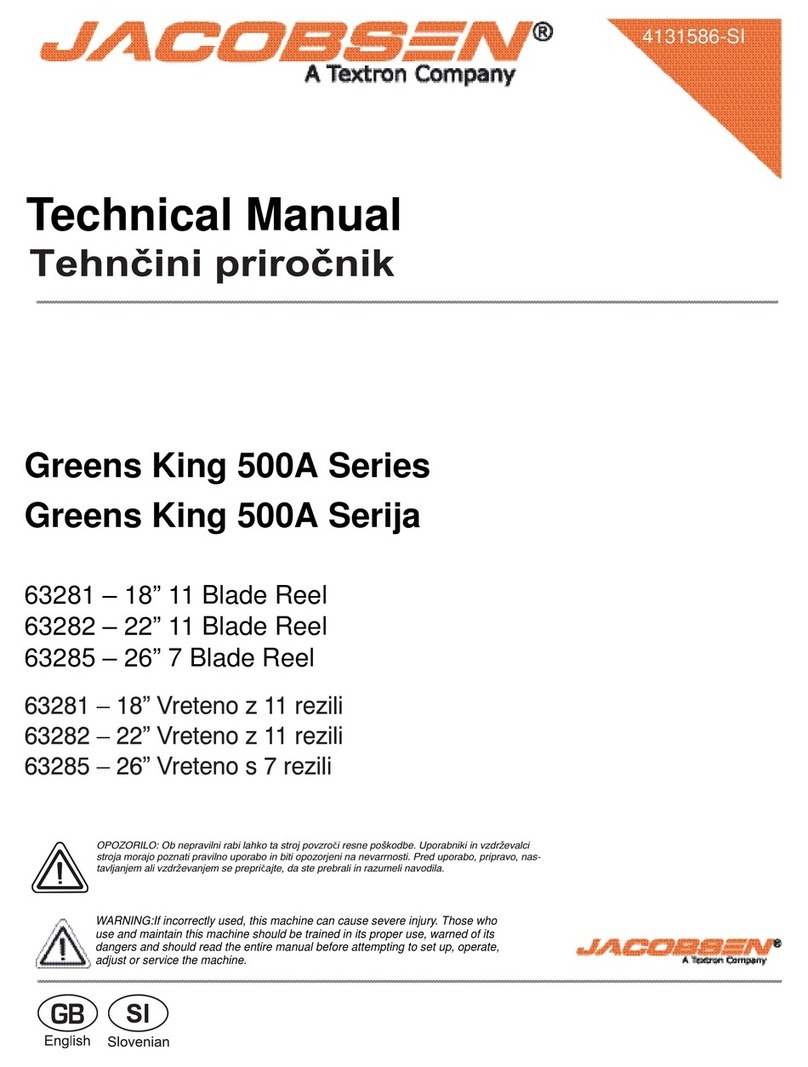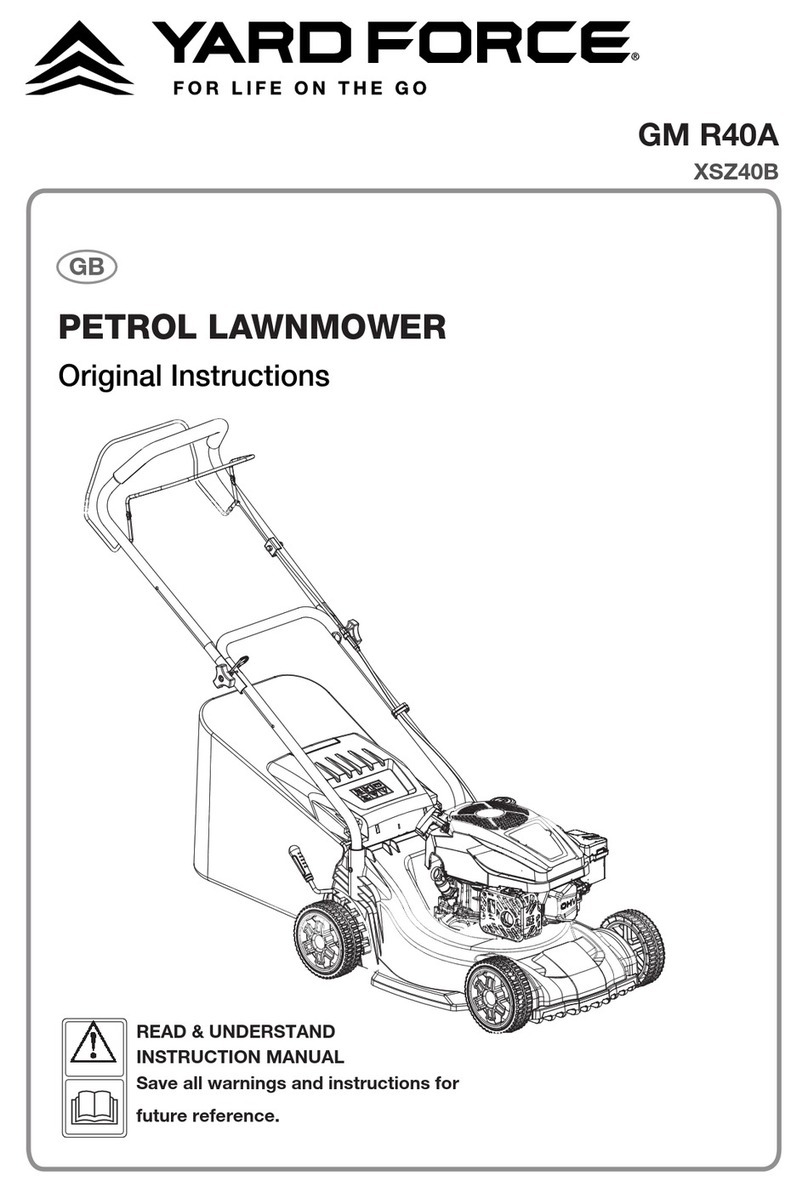SAFETY RULES
Safe Operation Practices for Riding Vehicles
As Recommended by American National Standards Institute
WARNING: This cutting machine is capable of amputating hands and feet and throwing objects. Failure to observe the
following safety instructions could result in serious injury or death to the operator or bystanders.
GENERAL OPERATION:
1. Read, understand and follow all instructions in the Instruction
Book, on the machine, the engine and with any attachments
before starting.
2. Only allow responsible adults familiar with the instructions to
operate the machine.
3. Clear the area of objects such as rocks, toys, wire, etc.
which could be picked up and thrown by the blade.
4. Be sure the area is clear of other people before mowing.
Stop the machine if anyone enters the area.
5. Never carry passengers.
6. Disengage power to the mower or any attachments before
backing up. Do not mow in reverse unless absolutely neces-
sary. Always look down and behind before and while back-
ing.
7. Be aware of the direction the mower discharges. Do not point
discharge from the mower at anyone or at places where
people may be. Do not operate the mower without either the
entire grass bagger or the mower guard in place.
8. Slow down before turning.
9. Never leave a machine unattended with the engine running.
Always disengage the blade(s), set the parking brake, stop
the engine and remove the key before dismounting.
10. Disengage power to attachment(s) when transporting or not
in use. Disengage the blade(s) when not mowing.
11. Stop the engine before removing the grass bagger or unclog-
ging the chute.
12. Mow only in daylight or good artificial light.
13. Do not operate the machine while under the influence of al-
cohol or drugs or when very tired.
14. Watch for traffic when operating near or crossing roadways.
15. Use extra caution when loading or unloading the machine
when using a trailer or truck for transporting.
16. Disengage all attachment clutches and shift into Neutral be-
fore attempting to start the engine.
17. Always wear safety glasses or an eye shield when you oper-
ate the unit to protect your eyes from foreign objects that can
be thrown from the unit. Always wear eye protection when
you make an adjustment or repair to the machine.
18. Use care when pulling loads or using heavy equipment.
a. Use only approved drawbar hitch points.
b. Limit loads to those you can safely control.
c. Do not turn sharply. Use care when backing.
d. Use counterweights or wheel weights when suggested in
the Instruction Book.
19. Do not operate this machine if you are taking drugs or other
medication which can cause drowsiness or affect your ability
to operate this machine.
20. Do not use this machine if you are mentally or physically
unable to operate this machine safely.
21. Data indicates that operators, age 60 years and above, are
involved in a large percentage of riding mower related inju-
ries. These operators should evaluate their ability to operate
a riding mower safely enough to protect themselves and oth-
ers from serious injury.
SLOPE OPERATION:
Slopes and rough terrain are major factors related to loss of
control and tip over accidents which can result in severe
injury or death. ALL slopes require extra caution. If you can-
not back up the slope or if you feel uneasy on the slope, do
not mow it. See the "Slope Guide" in the back of this book to
check for safe operation.
DO
1. Mow up and down slopes, not across.
2. Remove obstacles such as rocks, limbs, etc...
3. Watch for holes, ruts or bumps. Uneven terrain could over-
turn the machine. "Tall grass can hide obstacles."
4. Use slow speed. Choose a low enough gear so that you will
not have to stop or shift while on the slope.
5. Follow the manufacturer's recommendations for wheel
weights or counterweights to improve stability.
6. Use extra care with grass baggers or other attachments,
they can change the stability of the machine.
7. Keep all movement on the slopes slow and gradual. Do not
make sudden changes in speed or direction.
8. Avoid starting or stopping on a slope. If tires lose traction,
disengage the blades and proceed slowly straight down the
slope.
DO NOT
1. Do not turn on slopes unless absolutely necessary, then
only turn slowly and gradually downhill, if possible.
2. Do not mow near drop-offs, ditches or embankments. A
wheel over the edge or an edge caving in could cause a sud-
den overturn and an injury or death.
3. Do not mow on wet grass. Reduced traction could cause
sliding.
4. Do not try to stabilize the machine by putting your foot on
the ground.
5. Do not use a grass bagger or other rear mounted accesso-
ries on steep slopes (greater than 10 degrees).
F-020611 L
